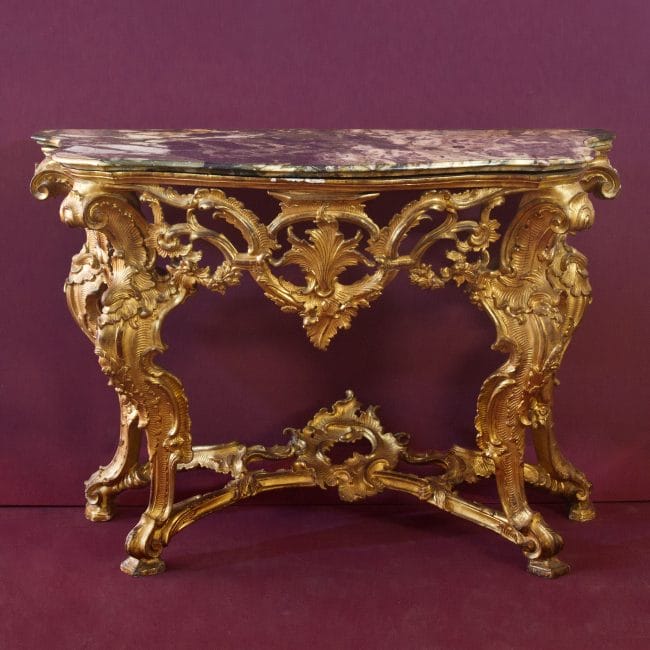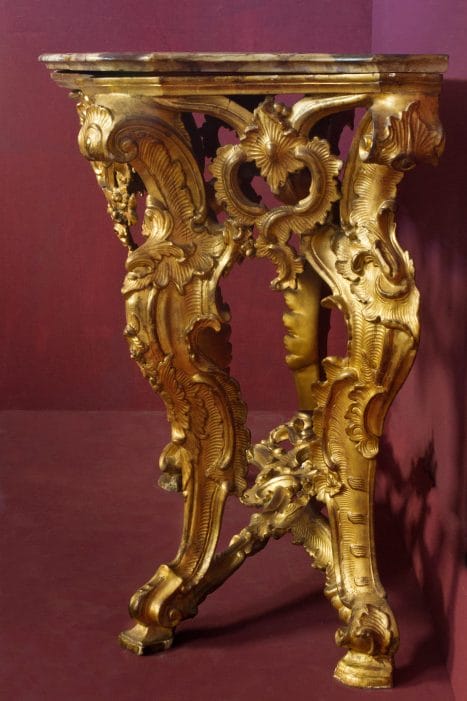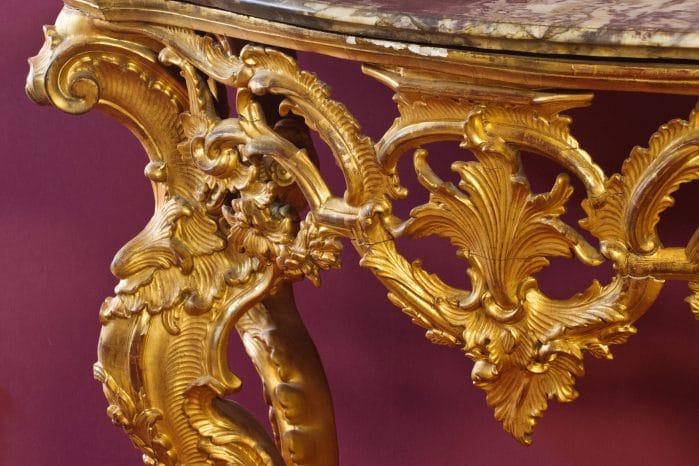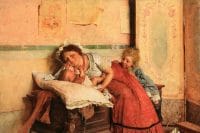Golden Genoa
Flashes of gold from 18th century Genoa, told by an exceptional console!
Being constantly in contact with the great beauty of the past makes the profession of an antiques dealer something similar to a privilege and consequently almost an exemption, an exemption from the ugliness of everyday life. Often addicted to their own objects and years of rewarding but also stressful trade, antique dealers must continually rely on their innate and strong capacity for renewal by chasing fluctuating trends and fashions that often cause the value of antiques to slip or, on the contrary, rise.
This does not apply, or at least applies marginally for all those objects considered to be of a higher than average level, for all those objects which denote strong design and have the intrinsic strength of not giving in to the blackmail of the market such as for example the console presented in this article.

Of astonishing and rare executive quality, this sumptuous console is proof of the mastery achieved by eighteenth-century Ligurian cabinetmakers in creating parade furnishings commissioned by the most prominent Genoese aristocratic families of the time. Similar works, outlined by an unparalleled ornamental exuberance, characterized the large workshops that operated in the first half of the 18th century, seeing the establishment of important schools on the peninsula, particularly the Roman and Genoese ones.
Genoa in the 18th century was a rich and prosperous city where patrician families, always dedicated to trade and finance, were able to afford sumptuous parade furnishings. It is precisely in such flourishing contexts as the Genoese one that the current distinction between antiques and high antiques begins to take shape by separating the cabinet makers (united in the Bancalari corporation) from the wood craftsmen, the latter dedicated to the production of lower quality furniture. A distinction is made between furnishings intended for private homes and parade furnishings.

We look at the Netherlands, the aforementioned France and England from which the famous Genoese four-leaf clover derives.
In this superb wall table the strong sculptural connotation of the furniture is evident, understood precisely as an organism in continuous transformation, in symbiotic movement with the context, which is why the cabinetmaker becomes a true master sculptor. The opulence and plastic vigor of its design surpass the function of furniture, effectively becoming an object to contemplate, a parade piece of furniture, a baroque work of art and as such aimed at the exaltation of the owner who through it ennobles his own spaces representative servants and their social rank.
However, the ornamental redundancy does not go beyond highlighting the compositional balance of the whole, expertly controlled by a modular proportioning that was very clear to the great creators of these timeless furnishings.

We will be able to unusually begin the descriptive adventure of this table from the marble top that crowns the whole with regal and peremptory dignity, a portentous slab in the so-called "peach blossom", sublime and rare marble, used for the most important pieces. The shaping of the same adapts to the wavy shape of the wooden frame and is finished on its perimeter by a beautiful owl's beak profiling, as they say in technical jargon. The conservation of the original marble is not something to be taken for granted in large antique furniture, original marbles which are often replaced by equally different marbles which are not always up to par; in this case the marble is the relevant one of origin, thus validating the historical integrity of the asset as well as amplifying its economic value.

The wooden scaffolding of the console lives with its triumphant golden whim imbued with curves that are sometimes sudden, sometimes shy and barely revealed, all commensurate with a great sense of design. The sculptor/cabinetmaker proves to be up to date with the morphological lexicon of the mid-700th century, full of references to the rocaille style prevalent in those years and known as the "Louis XV style". Quotations found in the typical comb shells, in the frivolous and fluttering scrolls, in the curly endings and more generally in the wavy and affected facies of the entire console. The four powerful legs dematerialize, softened by an always affected and flirtatious wood carving, coordinated by a beautiful "X" crosspiece centered by a large asymmetrical motif of exquisitely rococo taste. The infinite design of the furniture is completed by the four curled endings supported by bases.

[The console will be visible in the stand of Goglia Antiquities HALL 3 STAND D62 at the next edition of Mercante in Fiera from 2 to 10 October 2021]
Lodovico Caumont Caimi, “The Genoese cabinet-making of the eighteenth century”, 1995
All the images reproduced here belong to Antichità Goglia.















